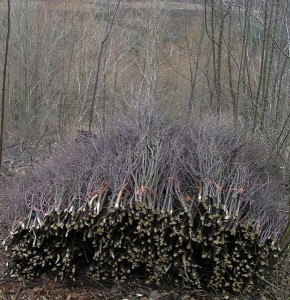
The Witch’s Broom, part I
February 24, 2012Helen Hwang and others at the Mago Circle have been sharing ideas about the sacred broom, and I felt inspired to do a bit of research regarding the use of this magical tool in Western witchcraft. Quickly pulling books off my shelf, I soon had a pile of information that was far too extensive for a blog post. I think I’ll stay with this topic for a few weeks, however, and approach a piece of the subject each week from a different perspective. The first thing that we have to grapple with when we talk about the broom as a magical tool is that the sacred broom is not really a broom, not in the way it is commonly understood as a utensil for sweeping debris off the floor. So what is it? Is it the act of sweeping that makes the broom magical? Is it a cleaning application in the realm of etheric energies? Is it some quality in the materials sewn into the part that sweeps? Is it some quality in the handle? Does it relate to the broom’s relationship to the house? As we will see, all of these things play into the magical power of the broom.When we talk about witches riding their brooms, the cliched expression is “riding on their broomsticks.” Yet we don’t ordinarily refer to the handle of the broom in other contexts. For example, if I wanted someone to pass a broom to me, I would say, “hand me the broom,” not “hand me the broomstick.” Magically speaking, the stick in broomstick warrants examination.
The first thing that we have to grapple with when we talk about the broom as a magical tool is that the sacred broom is not really a broom, not in the way it is commonly understood as a utensil for sweeping debris off the floor. So what is it? Is it the act of sweeping that makes the broom magical? Is it a cleaning application in the realm of etheric energies? Is it some quality in the materials sewn into the part that sweeps? Is it some quality in the handle? Does it relate to the broom’s relationship to the house? As we will see, all of these things play into the magical power of the broom.When we talk about witches riding their brooms, the cliched expression is “riding on their broomsticks.” Yet we don’t ordinarily refer to the handle of the broom in other contexts. For example, if I wanted someone to pass a broom to me, I would say, “hand me the broom,” not “hand me the broomstick.” Magically speaking, the stick in broomstick warrants examination.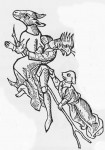
The wand is the magical weapon of invocation; but among witches it sometimes took the form of the riding pole, upon which they performed the traditional jumping dance to make the crops grow tall. This dance was probably the origin of the idea that witches used broomsticks or staffs to fly through the air upon….To dance over the ground with a pole or staff between the legs is an obvious phallic gesture of the old fertility rites. Hence the end of the riding pole was often carved in the shape of a phallus. This, however, marked the staff as an obvious magical object, an adjunct of the Old Religion that was dangerous to have leaning against one’s cottage wall in the times of persecution. So the phallic riding pole had its carved end disguised with a bunch of twigs and became the witch’s broomstick.
Despite (or because of) its phallic symbolism, the broom is traditionally a woman’s magical tool, although Radmir Ristic in Balkan Traditional Witchcraft says there was at one time a type of broom associated with threshing that men used. The type of wood used in the handle influences the magic. Ash, the World Tree in Germanic lore, is the most common traditional wood, but there are no hard and fast rules here.The broom in the photograph is my own broom. It is a handmade broom given to me as a gift. Instead of a phallic tip, there is the face of a bearded man carved into the handle. The wood is mesquite, which is the tree witches in the Sonora Desert commonly use for magical implements. It is a medium sized, thorny tree with hard wood and very tiny leaves. The flowers, like the wood, are highly aromatic and attract legions of bees. The honey has a strong distinctive flavor. Mesquite produces pods that can be ground into flour or boiled to make a sweet thick beverage. Since the mesquite tree produces sweet abundance in a tough environment, it brings a life-giving, sustaining quality to the broom magic, similar to the wood from the World Tree.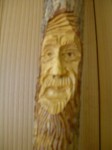 My next installment of this series will discuss the “sweepy” part of the broom.SourcesRistic, Radomir. Balkan Traditional Witchcraft. Translated by Michael C. Carter, Jr. Los Angeles: Pendraig Publishers, 2009.Valiente, Doreen. Witchcraft for Tomorrow. Custer, WA: Phoenix Publishing, 1987.
My next installment of this series will discuss the “sweepy” part of the broom.SourcesRistic, Radomir. Balkan Traditional Witchcraft. Translated by Michael C. Carter, Jr. Los Angeles: Pendraig Publishers, 2009.Valiente, Doreen. Witchcraft for Tomorrow. Custer, WA: Phoenix Publishing, 1987.
Welcome, Pagan Blog Project!
February 19, 2012Good Morning, Little Dove
February 17, 2012
Happy Valentine’s Day
February 14, 2012 It’s nice to see the celebration of love flourishing again in the land of Ishtar.
It’s nice to see the celebration of love flourishing again in the land of Ishtar.
It’s Witchcraft
February 12, 2012The Divine Woodpecker
February 10, 2012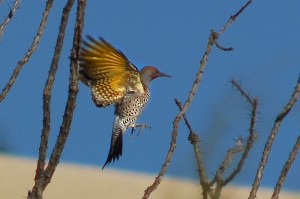
Sometimes the Monkeys Win One
February 9, 2012A chuckle for those who haven’t seen it yet. Vermont correctional inmates pull an adolescent prank. As a social worker I’ve encountered my share of game players, as well as professionals who became distraught each and every time they were outfoxed. Myself I try not to take it personally and to say, “Oh well, another alcoholic/addict/sociopath tricked me. Isn’t the first time, and it won’t be the last.”
Sorting Through the Games
February 3, 2012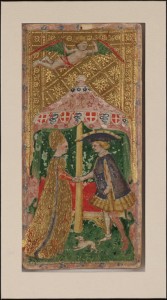
surrounding the bet becomes so steeped in meaning that life outside the gambling arena takes on a comparative sense of unreality. In this regard it is interesting that in China, where the very earliest playing cards have been documented, passion for gambling is longstanding and integral to traditional culture, while divinatory insight is complex, preoccupying and pervasive. Gamblers have no corner on the market for superstition, but to suppose that tarot cards were used for centuries in gambling before they were used for divination stretches credibility.Several German keys for divination with playing cards appeared between 1505 in 1543, and an Italian system appeared in 1540. These books are usually not considered relevant to tarot divination because they refer to ordinary playing cards. Around 1750 the first written summary of divinatory meanings for the major arcana appeared. This is the sole basis for the common assertion that tarot card divination did not exist for the three centuries following development of the tarot. Why a written manual so late in the game? One explanation is that during the eighteenth century a broad array of sciences were being systematized and recorded, many for the first time. We would expect a tarot key to appear during this time, and the absence of an earlier one does not preclude the existence of tarot divination before this time. Indeed, it says very little one way or the other.Playing cards and tarot are not much different in origin and early usage, and divination does not occupy a separate, contained sphere of life. It is plausible and consistent with the few available facts to assume that tarot cards were used for divination from the beginning.SourcesRita Aero. Things Chinese. Garden City, NY: Dolphin Books, 1980.International Playing Card Society, History of Playing CardsJean-Claude Flornoy, Tarot History and Tarot DivinationMary K. Greer, Lola Lucas, K. Frank Jensen, Timeline of the Occult and Divinatory TarotPaul Huson. Mystical Origins of the Tarot. Rochester, VT: Destiny Books, 2004.Robert Swiryn. The Secrets of the Tarot. Kapaa, HI: Pau Hana Publishing, 2010.Tarotpedia, Francesco MarcoloniTrionfi, Oldest Evidence for Divination with Cards

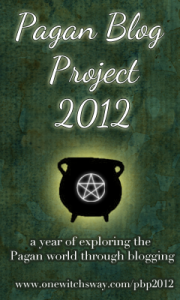 The Pagan Blog Project.
The Pagan Blog Project.